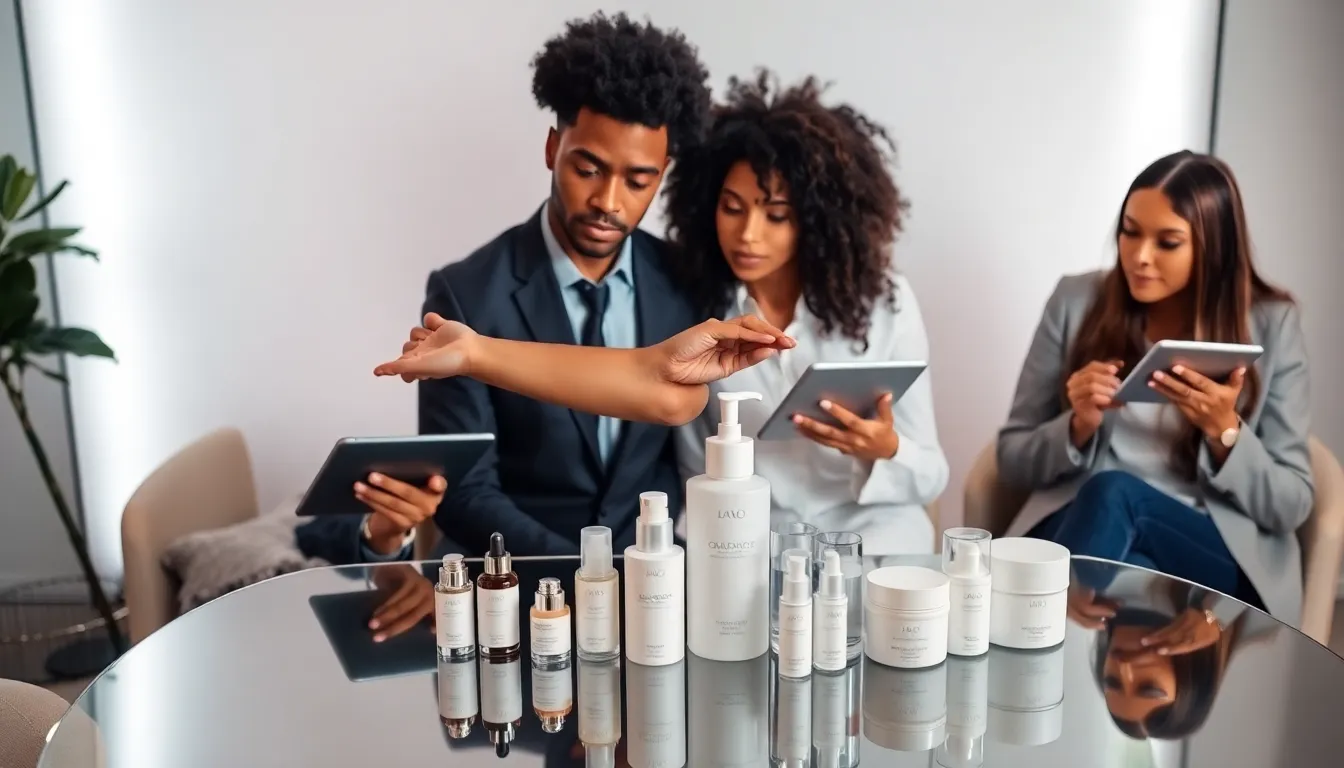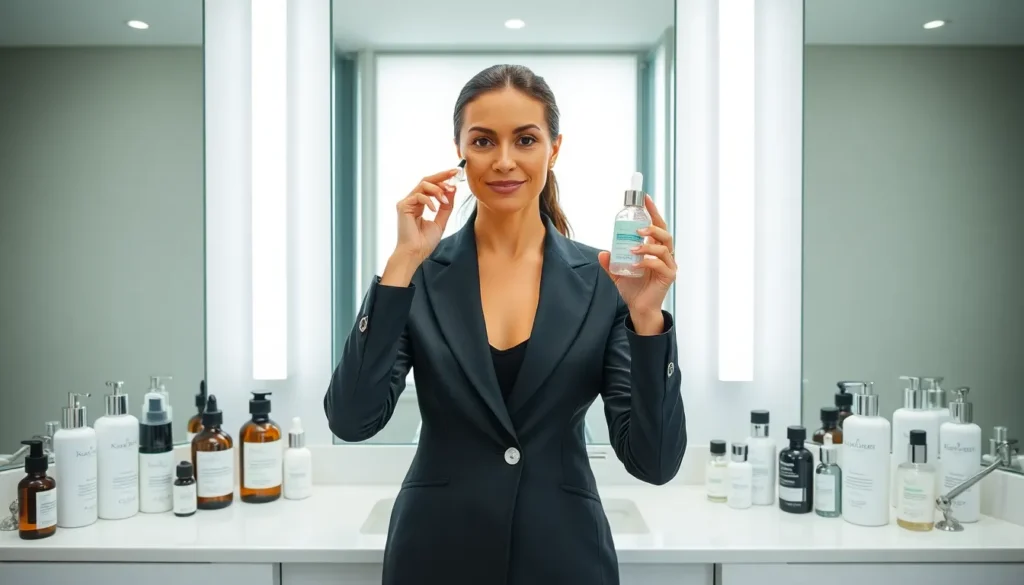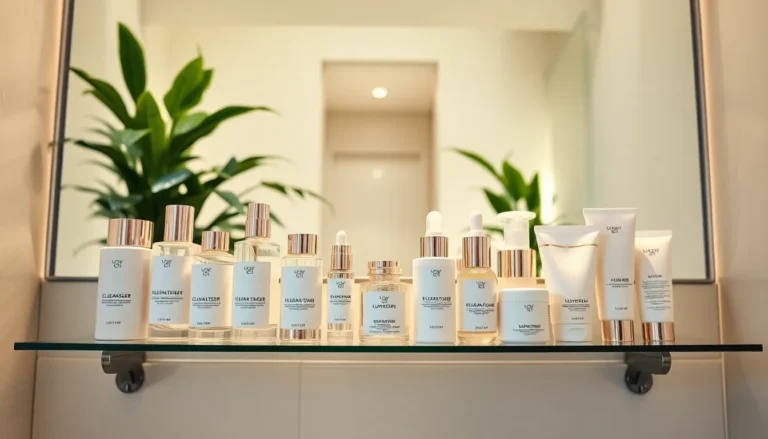Table of Contents
ToggleNavigating the maze of skincare products can feel a lot like solving a Rubik’s Cube in the dark. You think you’re only a twist away from that flawless glow until you realize you’ve just muddled things up even more. But fear not. Understanding how to layer skin care products correctly can transform your skincare routine from chaos to a well-oiled machine. With a few key principles and some guidance, she can achieve that radiant, envy-inducing complexion. Ready to ditch the confusion? Let’s break down the art of layering for skin that practically glows in the dark.
Understanding The Basics Of Skin Care Layering

Layering skin care products isn’t just an art: it’s a science. At its core, effective layering relies on the idea of applying products from the lightest to the heaviest, allowing each layer to absorb properly and deliver its benefits. This can feel a bit like building a house, if the foundation isn’t solid, the whole structure is at risk.
Why Does It Matter?
Skin has its own rhythm. It has different needs throughout the day and can react uniquely to various products. The goal is to use layers to enhance the skin’s natural barrier without overwhelming it. Recognizing your personal skin type and what it craves is the first step in this layering journey.
Each Product’s Role
Think of each product as a specialized tool in a toolbox. Cleansers remove impurities, toners prep the skin, serums deliver targeted treatments, and moisturizers lock in hydration. When layered correctly, these products work synergistically, creating a fortified barrier that maintains skin health.
The Importance Of Layering For Skin Health
Layering products can be vital for achieving optimal skin health. Each layer provides not only hydration but also addresses specific skin concerns. For instance, consider the relationship between hydration and treatment. A hydrating serum can boost the efficacy of acne treatments or aging serums.
Combatting Environmental Stressors
Our skin faces daily stress from pollution, UV rays, and harsh weather conditions. Effective layering acts as a shield, supplying nutrients and protective barriers that support the skin against these aggressors.
Long-Term Benefits
Incorporating a proven layering technique into a skincare routine enhances overall skin appearance and helps tackle various concerns over time. Consistency is key: with time, results will be cumulative. She’ll find that patience pays off, leading to a clearer, more youthful complexion.
Step-By-Step Guide To Layering Skin Care Products
Now that the foundational concepts are clear, let’s jump into a straightforward layering routine. Here’s a step-by-step guide for a morning and night regimen:
- Cleansing: Start by washing the face with a gentle cleanser to remove any impurities. This step clears the canvas for better absorption.
- Toning: After cleansing, tone the skin. Using a cotton pad, apply a toner or spritz directly on the face. This helps balance the skin’s pH and prepares it for subsequent products.
- Serums: Next, apply serums. Always opt for lighter formulas first. A hydrating serum followed by a treatment serum addresses specific concerns: for example, hyaluronic acid is great for hydration, while salicylic acid could target acne.
- Moisturizer: Once the serums are absorbed, lock in that goodness with a moisturizer tailored for the skin type. This seals in the previous layers.
- Sunscreen (only in the morning): Finish off with a broad-spectrum sunscreen to protect against UV damage.
Night Routine Consideration: Except for sunscreen, the steps remain the same for nighttime care.
Follow this structure for optimal hydrating and protective effects.
Choosing The Right Products For Your Skin Type
Selecting products suited for individual skin types is crucial. Everyone’s skin is unique, and what works for one may not work for another. Here’s a breakdown to help navigate the choices:
- Oily Skin: Lightweight gels or oil-free moisturizers work wonders. Ingredients like niacinamide or salicylic acid can help manage oil production.
- Dry Skin: Look for richer creams that contain hydrating ingredients such as ceramides, glycerin, or essential fatty acids.
- Combination Skin: A balanced approach is key: consider using lighter products on oilier areas and richer formulations on dry patches.
- Sensitive Skin: Opt for products free from fragrances and irritating ingredients. Soothing ingredients like aloe or chamomile can help maintain calmness.
Patch Test: Always remember to patch test new products to minimize the risk of irritation.
Common Mistakes To Avoid When Layering Skin Care
Even the best intentions can lead to skincare mishaps. Here are some common mistakes to steer clear of:
- Too Many Products: Overloading the skin with too many layers can lead to irritation. Stick to what meets the skin’s needs and reassess regularly.
- Incorrect Application Order: Applying heavier products before lighter ones can prevent effectiveness. Remember: light to heavy.
- Neglecting Sunscreen: Skipping sunscreen when layering products in the morning can lead to sun damage. Protect that investment.
- Not Waiting Between Layers: Layering products too quickly can hinder absorption. Give each layer a moment to settle in, usually around a minute.
Listen to Your Skin: Finally, everyone’s skin reacts differently. Adapt the routine based on its response.
Tips For Optimizing Your Skin Care Routine
To further enhance skincare regimens, consider these pro tips:
- Stay Consistent: Skincare is most effective when it’s part of a routine. Daily commitment leads to noticeable results.
- Adjust Seasonally: As weather changes, so should the products. Lightweight formulations may work in summer, while heavier creams are great in winter.
- Hydrate Internally: Drinking plenty of water can elevate the results seen externally. Stay hydrated.
- Consult a Professional: When in doubt, always speak to a dermatologist. They can offer personalized recommendations based on individual needs.
Continue Learning: Stay informed on product ingredients and latest skincare trends. Knowledge is a powerful tool in achieving glowing skin.




